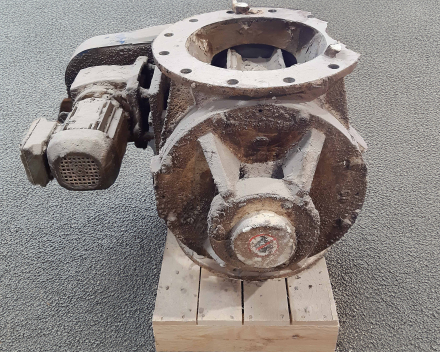- Home
- Newsletter
- Reliable valve for adhesive materials
Reliable valve for adhesive materials
21/10/2025 - 08:57
In many process lines, a rotary valve is indispensable. However, as soon as operations involve wet or sticky products, a conventional rotary valve quickly reaches its limits.
Typical problematic materials:
- Wet clay pellets
- Raw materials for gypsum production
- Wet biofuels for pyrolysis plants
- Sticky waste from stone wool production
- Wet and sticky slaughterhouse waste from destruction processes
Why materials adhere
There are four main causes that can lead to accumulation or adhesion of raw materials in a rotary valve:
- Stickiness due to additives – certain auxiliary substances increase adhesion.
- Hygroscopy – the material absorbs moisture and becomes sticky.
- Agglomeration – particles interlock and form clumps.
- Sintering – particles partially fuse due to internal friction or heat.
Each of these mechanisms can result in incomplete rotor emptying and reduced air-tightness.
Four effective solutions against sticking
- Rotor scraper: cleans the stator and flange wall during operation – prevents build-up inside the housing.
- Self-cleaning airlock: each rotor chamber is continuously emptied mechanically – ideal for sticky products.
- Easy-clean airlock: can be quickly and hygienically opened for thorough cleaning between production runs.
- Smooth interior finish: polished or coated surfaces minimize adhesion of product residues.
These solutions can be combined depending on product characteristics, process conditions, and cleaning requirements.
Spotlight on self-cleaning rotary valves
The problem: the rotor is not fully emptied during operation. This leads to build-ups, blockages, and ultimately reduced efficiency or even unplanned downtime. Self-cleaning rotary valves prevent these issues by continuously emptying the rotor mechanically during operation. This ensures that sticky material has no chance to accumulate.
Advantages:
- Consistent and reliable operation
- Fewer blockages and less maintenance
- Higher process stability under demanding conditions
Curious how it works?
👉 Click here to see the operating principle of a self-cleaning rotary valve in action.

